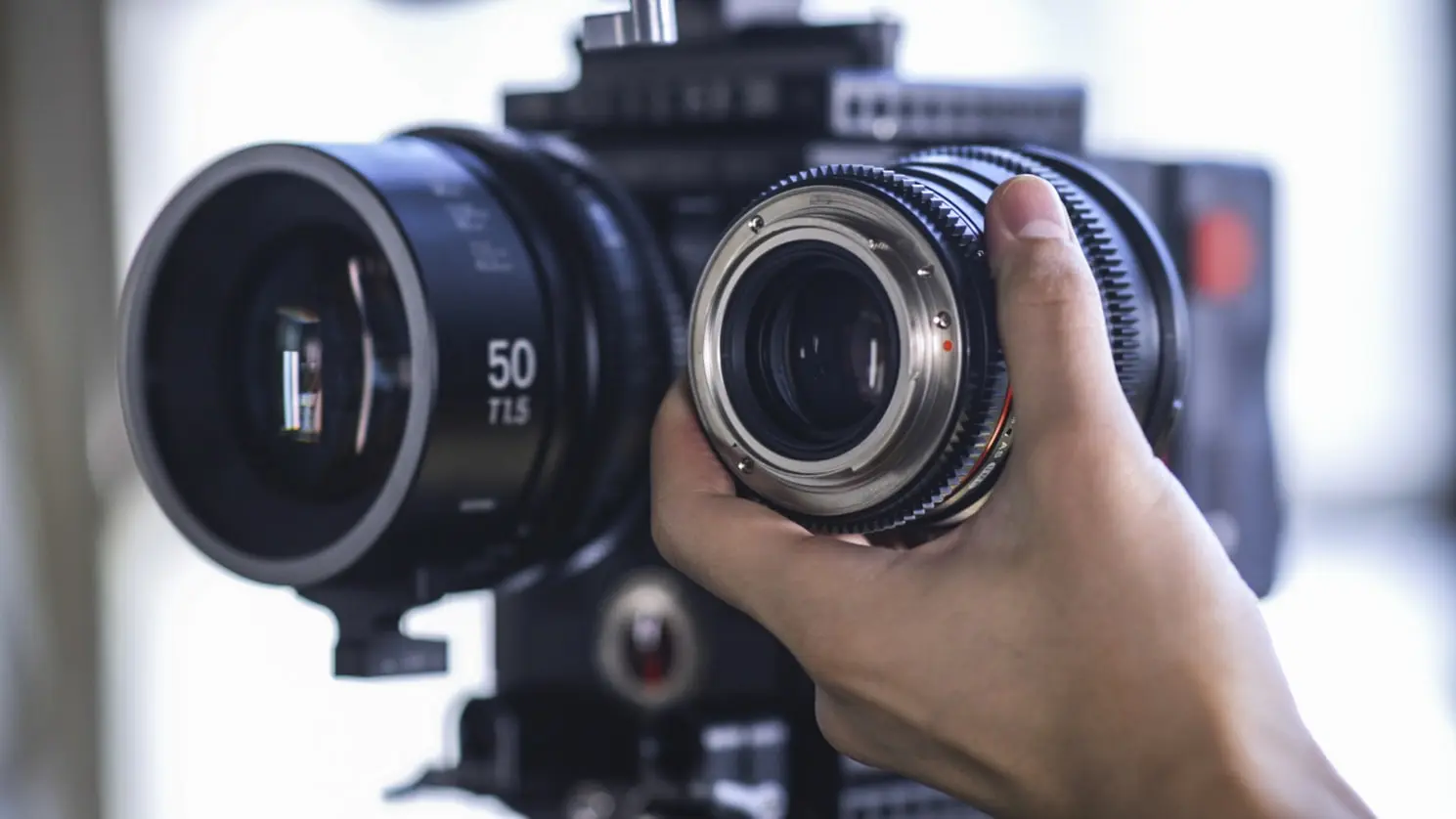Let’s have a show of hands. Are you confused by the sheer number of different lenses and lens manufacturers we have today? My hand is quite firmly in the air. It seems every time we visit a group or a forum online, someone is talking about an obscure lens brand that we have never heard of.
Being somewhat of a dinosaur, I come from a time when lens choices came down to two decisions. Cheap or expensive, on brand or off brand. Cutting my teeth in the ’80s, there were the original manufacture lenses, and then there was Sigma, Tamron and Tokina. Ok, there was also Vivitar, but no one that had been into photography for more than a week ever bought a Vivitar.
So why is there such a variety of different lens and lens manufacturers today?

Ease Of Manufacture
This is not to suggest that making a lens is easy. It is, however, much easier than it was one or two decades ago. Advances in manufacturing equipment such as 3D printers and similar improvements in design software have made it easier to design and build a new lens.
Couple this with lower manufacturing costs, again due to improved technology, it is now easier for smaller companies to gear up and produce lenses on relatively small production runs.
Increasing Large And Diverse Market
There is a saying, “Everyone is a photographer these days” while that is a cliche, the fact is the interchangeable lens market is much much bigger than a few years ago. Many more people are now taking photographs with DSLRs and mirrorless cameras.
They might not all be doing photography as a hobby, but they still want lenses to expand their capabilities. Often they prefer budget lenses to professional level ones.
Beyond the consumer market, many enthusiast and professional photographers are happy to work with the limitations of some budget lenses. If you are the type of photographer that shoots manual focus all the time, why spend three times the price for an autofocus lens?

Back To Basics
Many of these lenses are sold at budget prices because they dispense with the advanced features of the manufacturer’s lenses. The most obvious of these is autofocus, many of the lowest priced third-party lenses are manual focus only.
Another feature that is often cut down is the lenses ability to communicate with the camera body. Camera manufacturers often lock out some of the data that is communicated, meaning that third-party lenses do not get this information.
Things like optical stabilisation three-dimensional exposure and color data and other high-level technologies are often not present in third party lenses.
However, back to basics does not mean bargain basement. Because many of these lenses dispense with expensive extras, the main focus is on optical quality. Here many of these lenses shine and are comparable with their original manufacturer equivalents.

Exploiting Niches.
Large camera manufacturers are not geared up for relatively small production runs of lenses. It’s simply not cost effective to do so. As such look at the lens line up of pretty much any camera company and you will see strong similarities: professional, fast lenses, consumer lenses, telephoto and wide zooms and a smattering of primes.
For many years photographer’s would buy into this lens ecosphere because there were little to no niche products or those that did exist were hideously expensive. Because many of these newer third-party manufacturers are smaller, they are leaner and can gear up to small production runs of niche products and still make a profit.
One of the prime examples of niche products that are selling well is cine lenses. High-quality video has been around in DSLRs for well over a decade now. Independent filmmakers soon recognised the power of these cameras. The large sensors, small size and low cost made them powerhouses for low budget movies.

Companies soon sprang up creating adapters that would allow cinematographers to attach their expensive cine lenses to DSLR bodies. However, the camera manufactures failed to capitalise on the expanding lower end of the video market with low-cost cine lenses.
Companies like Samyang saw this niche and brought out lenses designed for filmmakers at very low prices. These lenses feature de-clicked aperture rings and much finer focusing control with a longer focus ring turn.
Another niche that third-party companies have jumped into is ultra fast primes. Ultrafast was once the preserve of very wealthy or top end professional photographers. Apertures of less than f1.4 were virtually unheard of. Today however you can pick up a 10.5mm f0.95 lens for a little over a $1,000. For $700 you can get an 85mm f1.2, portrait lens. The equivalent original manufacturer lens is nearly $2,000.
Budget ultra wide primes, perspective control and soft focus lenses such as Lensbaby are amongst the other niche products that are available for considerably less than their original equivalents.

What’s In Name
One thing that might confuse you as it did me for a while is the recognisable names from lens companies. Remember we mentioned Vivitar at the top? They are still around; they were bought out and rebranded themselves and are still producing lenses. I cannot comment on their quality these days.
Another very well known brand from history is Voigtländer. Although the company has long gone, the brand name is still in use today on lenses manufactured by Cosina
Other third-party companies have even stranger branding. Ever wondered why Samyang and Rokinon lenses look so alike? It’s because they are the same company. As is another name, Bower. The parent company is Samyang, a South Korean lens manufacturer who has been around since the 1970s. They are testing the other brand names to see which one suits a particular market.
Because of this, sometimes, it seems like there are many more lens companies than in reality. With that said, however, there are still many more than we had a decade or so ago and that’s a good thing.
Final Thoughts
There can be little denying that the rise of new third-party lens companies has benefited photographers. Some of the advantages are:
- High-quality optics for much less
- Ultrafast primes
- Cine lenses for budget lens prices
- Niche and novelty lenses for extra creativity.
It’s a great time to be a photographer. With such a plethora of budget options, we can pick out a niche lens and expand our creative repertoire.
Let us know in the comments below what your favourite third-party lens is.





4 Comments
I agree! I no longer fear buying exotic lenses from small manufacturers. I have a 25mm f/0.95 from Mitakon Zyonghi, a Rokinon fisheye. And a 50mm f/1.1 from Kamlan on Kickstarter. And btw, Vivitar Series 1 lenses were pretty good in the 80’s. 😊
The Sigma 30mm f/1.4 Contemporary (Sony E mount) pretty much lives on my camera. I use it for street and studio portraits and it’s also a well-documented must-have value lens. It would be the last one I’d ever part with.
The Rokinon 12mm f/2.0 is a fantastic fast, wide prime for dirt cheap. Yes it’s manual, but to get an auto with comparable optics you’ll spend twice as much and it won’t be as fast.
All very true. However there seems to be a hint, if not an outright suggestion that 3rd party lenses are making good glass accessible to the non-professional but they still are not really in the realm of pro photography. On this I would have to differ slightly. I have two pro series Tamron lenses (70-200 and 24-70) both purchased because when compared to the on-brand equivalents they were as good in nearly every way, better in several ways, only slightly disadvantaged in some ways and still significantly less money. From a business perspective I was not willing to pay more just to have on-brand glass with no other significant gains for the money. In fact I think that’s something non-professionals are more likely to do because they won’t pixel peep and analyze things like sharpness to the corners, chromatic aberrations and/or other artifacts, etc. The guy at the camera store tells them if they want the best then get on-brand. This is no longer sound advice. Now days it’s really pays to do in-depth analysis before buying.
I have to agree with you on Tamron lenses Kevin. I have the 90mm Macro, 35 1.4 G2 lenses. Both great lenses. The 35mm is astonishing. I’m looking at that 70-200 G2. I’m very impressed with Tamron.